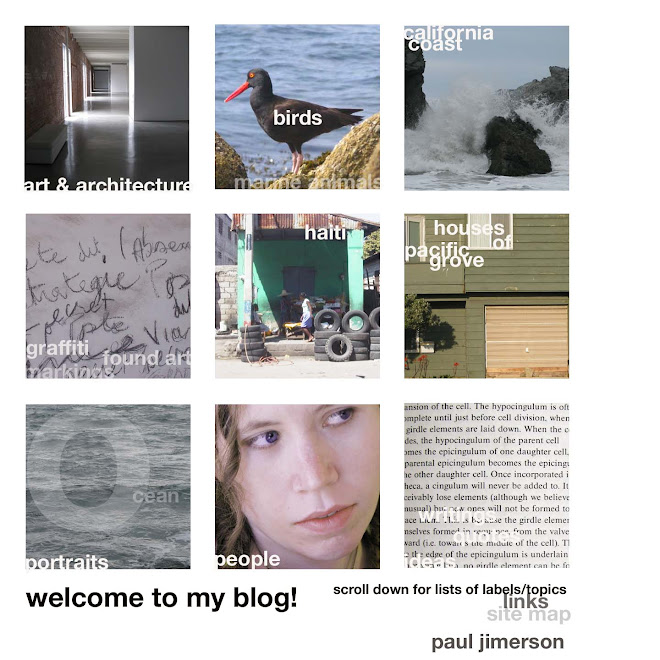
I have photographed glass in many different forms over the years. Modernism loves glass, from the use of glass block in the twenties in architecture, to the defining look of Modernist buildings, with their "walls of glass." The use of steel in large scale construction has freed facades from their load-bearing duties, making it possible to construct whole walls out of glass. Glass' transparent nature has allowed numerous architects, perhaps first and foremost Frank Lloyd Wright, to bring the outside in, and create a dynamic interplay between inside and out. One of Wright's great innovations was to use this interaction to create a flow between nature and built structures, particularly in his Usonian houses. He created the corner window, made possible by the cantilevering of steel beams that met in the corner, so that the glass slabs could be mitered to create a vanishing corner. Advances in glass technology over the years have enabled architects and engineers to collaborate on some spectacular glass structures.
My interest in glass is not only for what it allows us to see, but for the reflections that echo it's surroundings, especially in cities. Some architects take this to the extreme, creating buildings that nearly vanish as their mirrored facades reflect the sky and city around them. One of the great examples of this is I. M. Pei's Hancock tower in Boston, a sharply angled skyscraper which not only reflects the sky, but also one of the great architectural landmarks, H. H. Richardson's weighty Romanesque stone church, situated right next door, in Copley Plaza.
I have often used reflections in transparent glass in my photography, enjoying the complexity of reflections, and the accidents that occur when I am photographing in urban areas. The photo above was taken at the National Portrait Gallery, Washington, DC, housed in a gorgeous Greek Revival building that was the site of Abraham Lincoln's inaugural ball in 1865. The courtyard (which I will post in a separate entry) has a new canopy, constructed of wavy steel and glass, creating an indoor space that feels like an outdoor space, complete with the obligatory cafe, and a fountain that appears at first glance to be two huge wet rectangular patches on the floor. It is a stunningly beautiful space. The book store, pictured above, provided me the opportunity to create a minimal compositional structure with glass and lighting doing most of the work.

No comments:
Post a Comment